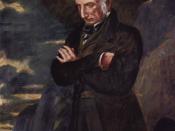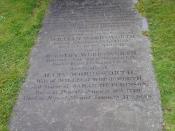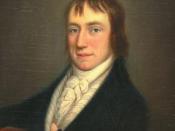Wordsworth's poems found in The Lyrical Ballads are very much representative of poetry of the time, in that the majority contain emotive and natural language as was the intention of followers of the Romantic Movement. The key theme of the movement was that human life should regress back to the days when man was more in touch with nature and when nature influenced the world, rather than industrialisation and money. The ballads focus on individuals, mostly people cast out of society for whatever reason, in their normal lives, and in doing so draws on various human sympathies to cause readers to relate to these people.
Two main examples of ballads in which Wordsworth uses this technique are "The Thorn" and "Simon Lee, the Old Huntsman." Both poems deal with people who have been rejected by their communities and now live isolated lives. Martha Ray for example, the indirect subject of "The Thorn", is described as a "wretched woman", who sits alone beside an "aged thorn" atop a "heap that's like an infant's grave in size" - this portrayal of Martha at the start of the poem sets up her character as being grim and dark, someone to be feared ("I have never heard of such as dare approach the spot when she is there").
The language Wordsworth uses seems to have the intent of causing readers to dislike and ostracise Martha based on scarce, third-party information, much like the members of her community did based on similar hearsay and gossip; "Old Farmer Simpson did maintain that in her womb the infant wrought," Wordsworth makes an example of a gossiper to represent the community in order to shame them as a whole. It is as if he is drawing the readers into a trap of behaving just as the similarly-characterised...


